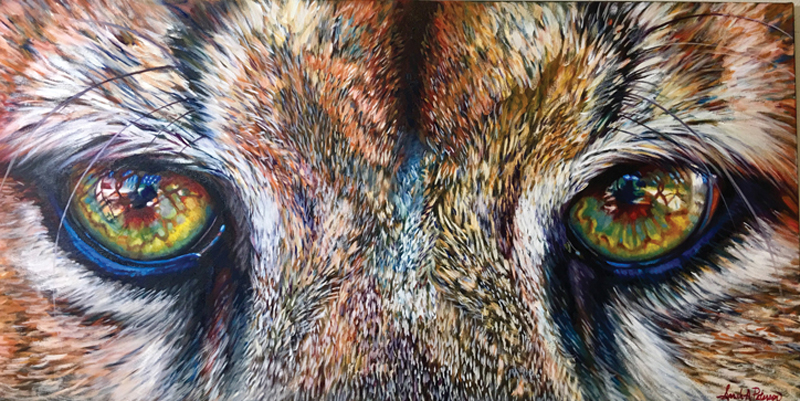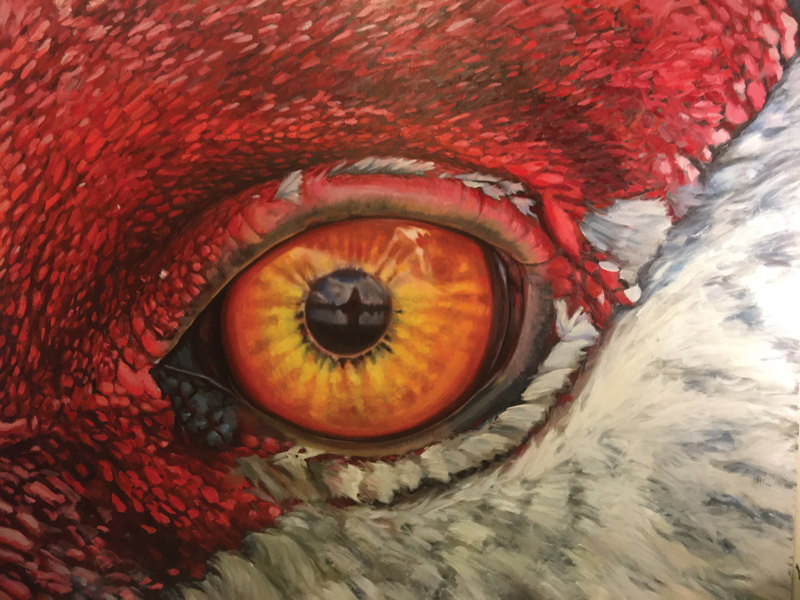Photography by Rafael Tongol
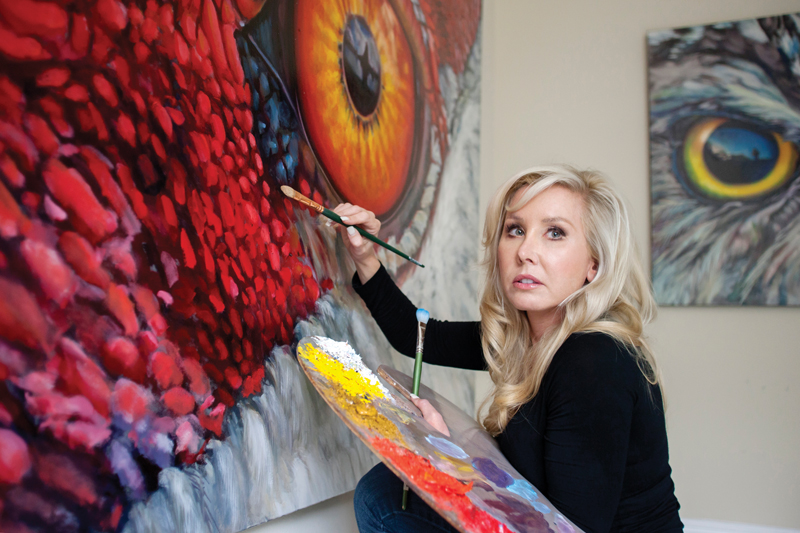
One of the best-known essays of the 20th century revolves around an encounter of a few seconds with a creature barely bigger than an ear of corn. You’ll find it in Teaching a Stone to Talk, a 1982 collection of the Thoreau-like ruminations of Pulitzer Prize-winning writer and devoted naturalist Annie Dillard.
In the essay, called “Living Like Weasels,” she challenges readers to live their lives with a wild, singular passion — a message she unspools from a moment spent face-to-face with one of those small, predatory mammals.
The encounter takes place as Dillard sits on the trunk of a fallen tree on the bank of a pond in Virginia’s Blue Ridge Mountains, near the small community of Tinker Creek. She’s enjoying the ebbing warmth of a setting sun when the weasel emerges from beneath a wild rose bush just a few feet away.
His face is “fierce, small and pointed as a lizard’s; he would have made a good arrowhead,” Dillard writes. Both the weasel and the writer are “shocked into stillness” for just a few elongated seconds.
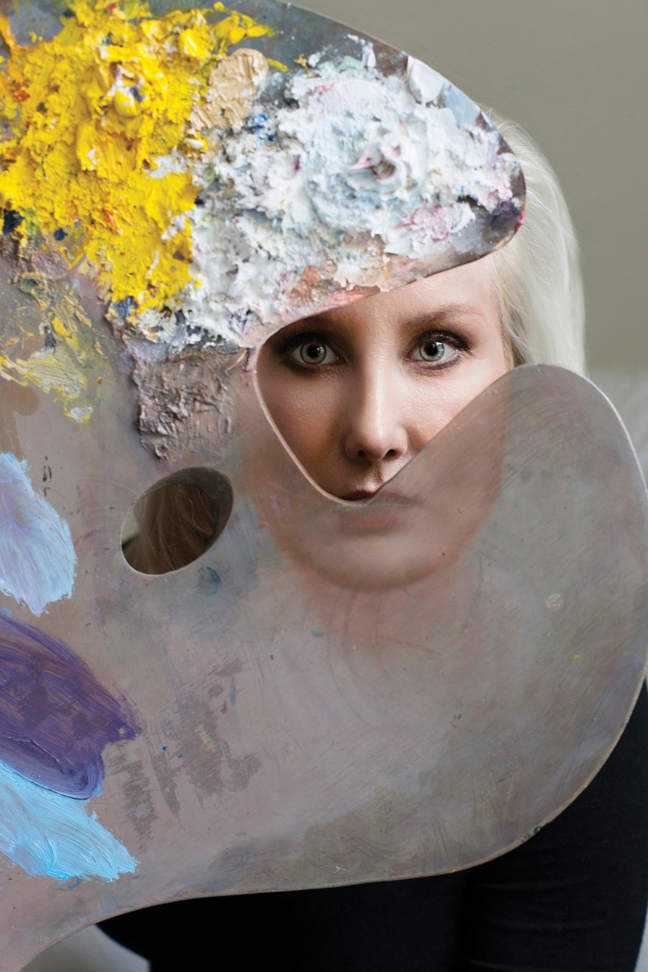
“Our eyes locked, and someone threw away the key,” Dillard continues. “Our look was as if two lovers, or deadly enemies, met unexpectedly on an overgrown path when each had been thinking of something else: a clearing blow to the gut. It felled the forest, moved the fields, and drained the pond; the world dismantled and tumbled into that black hole of eyes.”
Winter Park is a long way from Tinker Creek. But all it took to bring to mind this cosmic staring match was a trip to Sarah Peterson’s studio.
Until recently, Peterson, 43, had spent her career as a classically trained family-portrait painter. That changed following an experience she had last summer — one that led her to begin focusing on endangered animals that are indigenous to Florida.
Peterson — who, like Dillard, became captivated by the eyes of animals — creates startling, oversized images that she believes peer into the very souls of the threatened creatures she paints.
Peterson has lived in Winter Park since 2006, when she moved here from Atlanta with her husband, a commercial real estate broker. (They have since divorced.) She grew up in the small town of Dyer, Tennessee, about 100 miles northwest of Memphis, where she began painting at the tender age of 8.
For that early start she has, ironically, an animal to thank — albeit an imaginary one: Kermit the Frog. Well, Kermit and an observant and rather nervy parent.
Impressed by the deftness of her daughter’s drawing of the Muppet mainstay, Peterson’s mother, an English teacher, marched her talented offspring to Dyersburg State Community College and persuaded its art instructor to allow the youngster to attend a class with students fully a decade older.
“I was a shy child. I walked into that classroom with my head down,” recalls Peterson. “But looking around at all those college students around me gave me confidence. I thought, ‘If I’m sitting here, I must be something special.’”
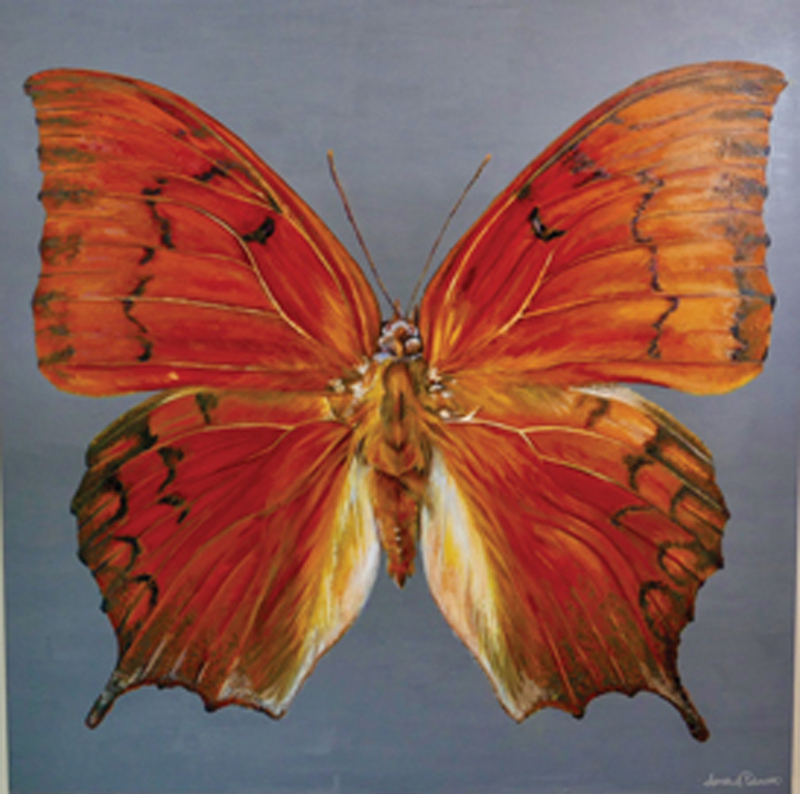
She was, apparently, right about that.
Peterson went on to graduate from Dyersburg High School, after which she moved to Nashville and earned a fine arts degree at Lipscomb University. “I had this degree but no job, and decided I wanted to teach,” Peterson says. “Plus, I really wanted to get to New York.”
She relocated to Manhattan and enrolled at the Parsons School of Design, where she worked toward certification as an art teacher. That meant attending classes while instructing teens at Fiorello H. LaGuardia High, a visual and performing arts school that inspired the 1980 film Fame.
In addition, Peterson studied advanced oil portraiture at the Art Students League, where she was tutored by such nationally recognized masters of the form as Ronald Sherr, Daniel Greene and Everett Raymond Kindler.
After finishing her studies, she worked full time as an elementary and middle school art teacher in Brooklyn before getting married and moving to Atlanta, where her husband attended Emery University. From Atlanta, her husband’s work brought the couple to Winter Park in 2001.
At first, Peterson put aside painting to raise two children. Following her divorce, however, she began to paint full time, concentrating on portraits of families. Several clients, though, asked her to paint their dogs. Recalls Peterson: “I thought, ‘Animals? Wow. That’s something different.’”
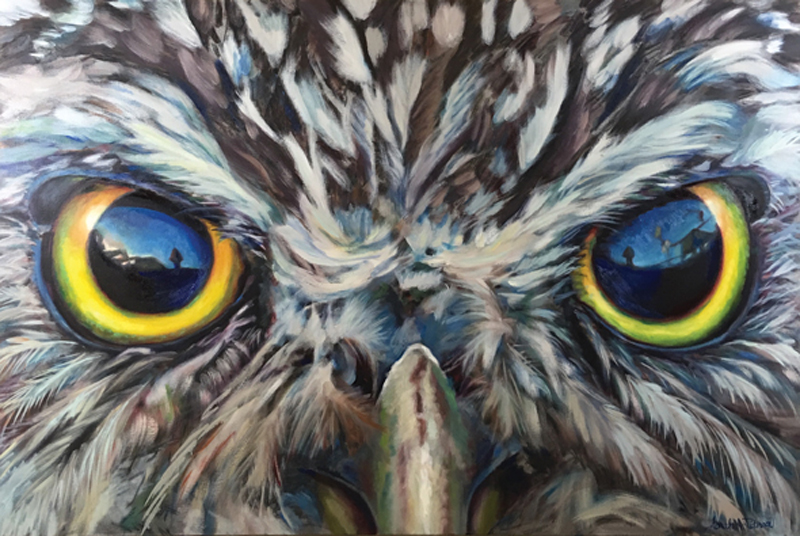
Portraiture might still be her specialty had the market for it not ebbed. (It’s a lost art,” she mourns.) Two paintings at the bottom of her staircase, across from her sunlit studio, testify to a meticulous style and a gift for evoking personalities. The paintings are of her children: son Bradley, now 12, and daughter Frances, now 9.
They’ve grown. So has she.
Searching for a new artistic direction, she visited a friend in Jackson Hole, Wyoming, last summer and made a trip to the National Museum of Wildlife Art, which is perched on a bluff overlooking the National Elk Refuge.
There were two exhibitions. One was a series of 10 brightly colored screen prints of endangered animals around the world, which was created in the early ’80s by Andy Warhol in his trademark style. The other was a series of photographs made by Joel Sartore, an author, teacher, environmental crusader and National Geographic photographer.
Sartore — who visited Winter Park in 2016 as part of the Winter Park Institute at Rollins College Speaker Series — is perhaps best known for creating the “Photo Ark,” a photographic catalog consisting of more than 25,000 photos of 7,521 animal species.
His Jackson Hole exhibit featured many images of animals confined in zoos and aquariums. “Because the animals were in captivity, he was able to use studio lighting. That brought out their eyes,” says Peterson. “That’s what struck me — the eyes being the window of the soul.”
Most people have heard that phrase — and instinctively know it to be true — but its origins are murky. Shakespeare, to whom the exact quote is often attributed, never used those precise words in his sonnets or plays.
In the Book of Matthew, it’s written that “the eye is the lamp of the body. If your eyes are healthy, your whole body will be full of light. But if your eyes are unhealthy, your whole body will be full of darkness.”
Whatever. Peterson saw something profound in the eyes of animals — and decided to try and paint it.
In some of Sartore’s photographs, Peterson noticed, you could see reflections of bars and wires. “You could tell the animals were captives,” she adds. “I thought: ‘What if I could do paintings like that?’ It could start a conversation.”
A particular kind of conversation, that is: one that Peterson envisions taking place between the subjects of her portraits and the people who view them. “I realized,” she says, “that I could use my painting to make a difference.”
When she returned to Winter Park, she began tracking down animal photographs she could use as inspiration, focusing primarily on the state’s endangered species.
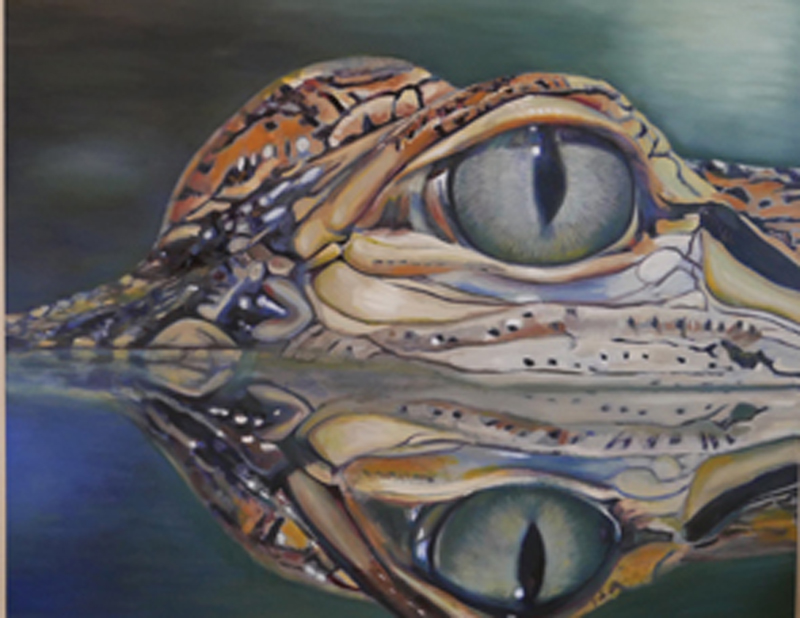
She mounted a big-screen television on her studio wall, which made it possible to magnify the photographs and get a closer view of feather and fur, scale and skin, as well as the eyes themselves. She was intrigued not only by their eyes, but by their textures.
Paintings in the series so far include two butterflies — a Florida leafwing and a ceraunus blue — as well as an alligator, a panther, a sandhill crane, a blue whale and a burrowing owl. In the panther’s eyes, you can see the reflection of a chain-link fence; in the owl’s, a housing development in the near distance.
Using a smart phone and a selfie stick, Peterson records herself from the first brushstroke on a blank canvas through completion of a work, then posts hypnotic time-lapse videos on her Facebook page. “I’m a photo-realistic painter,” she says. “I wanted to make sure that people knew I wasn’t just painting over pictures.”
“That part of the animal just speaks to you,” she mused. She turned toward the painting with a distracted air and stood there, returning the owl’s gaze for a moment — looking for all the world like someone lost in conversation.
Check out her work on Facebook at Sarah Peterson Fine Art. And contact her regarding commissions at sarahpetersonfineart@gmail.com. Because so many professors have used it in their writing classes, you can find “Living Like Weasels,” which is only four pages long, if you spend a little time poking around online for it.


